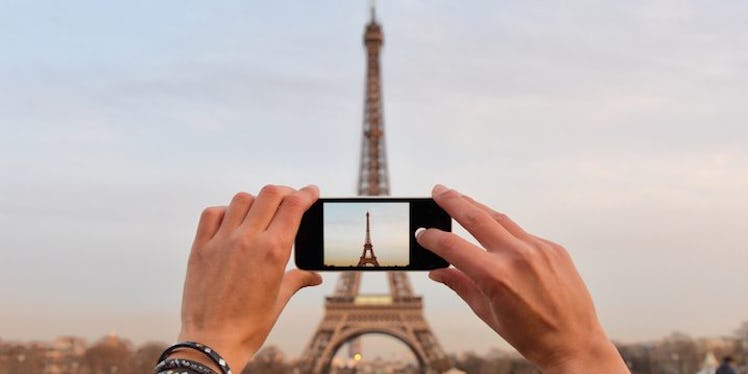
These 9 Travel Photography Tips Will Take Your Instagram To The Next Level
Traveling is all about discovering other cultures and walks of life, and many of us want to catch these memories in photographs we can share when we return home.
You don't have to be a professional photographer to shoot amazing photographs of your journey, and you don't even need to purchase a fancy camera (though it does help).
Most smart phones have the ability to produce great photos, and point-and-shoot cameras are an affordable way to teach yourself some basic travel photography skills.
Try out these nine amateur tips for shooting travel photography and you'll have a better understanding of how to use color, composition and lighting to your advantage.
1. Be steady.
One of the biggest mistakes beginner photographers make is not making sure the camera is still.
A tripod helps immensely with this issue, but if you don't have one, try to steady your camera by propping your arms against a stationary object, or even your leg or the side of your face.
Your camera may also have an action photography auto setting, so try using that as well to avoid blurry, out-of-focus photos.
2. Remember the Rule of Thirds.
Imagine breaking your photo up into nine sections using two vertical lines and two horizontal lines, like a game of Tic-Tac-Toe.
The idea is to place key focal points of your photo where the lines intersect, which creates visual balance.
Many point-and-shoot cameras have a grid setting to help you use the Rule of Thirds when composing photos.
3. Shoot during the Golden Hour.
When shooting with natural lighting, try to take photos during the Golden Hour — the period just after sunrise or before sunset.
The light will be soft, casting few harsh shadows and allowing you to capture rich colors.
Try using this Golden Hour calculator to predict the best time to shoot pictures based on location and season.
4. Be sneaky.
Some of my favorite photos are scenes where I ducked into an area not frequented by tourists so I could get a more unique viewpoint of a city or landscape.
One of my personal obsessions is capturing street artists who are making spray art murals or tape art, and photographing them while they are creating an artwork sometimes requires sneaky photo skills.
Just remember it's always better to ask a subject permission — especially street performance artists — as they make their living off their photos.
5. Incorporate framing.
Framing is one of my favorite photography tricks, and is another way of drawing the viewer's eye to the subject of the photo.
The main types of framing you can achieve with a point-and-shoot or smart phone camera are environmental and structural framing, where you frame your subject using elements already present in the scene like trees, an arch, pillars or even a window.
6. Establish scale.
It can be hard to capture things like sweeping landscapes and tall buildings as you see them with the naked eye.
The simplest way to add depth and context to your photo is to keep in mind your photo needs to have visual interest in the foreground, middleground and background.
If you are shooting a field with mountains in the background, for instance, try to find a rock, tree, or building close to you to establish scale.
7. Don't forget the Color Theory.
Familiarize yourself with the color wheel and keep complimentary and contrasting colors in mind when taking travel photos — both can add interest to your shot.
You can also adjust the tone and highlights in your photo after you take it by using editing software or applying a color filter.
8. Don't forget about leading lines.
A leading line is a line formed by the horizon, an object, or a manmade road or path that draws the viewers eye to the subject of the photo.
Leading lines create interest, break up your photo and help distinguish your focal point.
I use this principle often when shooting nature photography while hiking — the trail often makes for an amazing leading line that adds depth and dimension to my photograph.
9. Play with Angles
Changing the angle can transform a photo.
When I find a really interesting subject or landscape, I always try to take my picture from at least three different angles while playing with composition and perspective.
Try moving to different sides of your subject, dropping down low to shoot it from below or raising your arms high to shoot from above.
Safe travels!